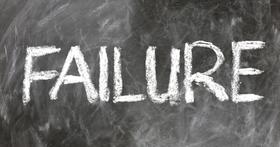Simpson Academy High School For Young Women ranks in the top 10% of all schools in Illinois for overall test scores (math proficiency is top 10%, and reading proficiency is top 20%).
The percentage of students achieving proficiency in math is <50% (which is higher than the Illinois state average of 28%). The percentage of students achieving proficiency in reading/language arts is <50% (which is higher than the Illinois state average of 32%).
Quick Facts (2025-26)
- School Type: Alternative school
- Grades: 6-12
- Graduation Rate: ≥50%
- Math Proficiency: <50%
- Reading Proficiency: <50%
- Source: National Center for Education Statistics (NCES), IL Dept. of Education
School Overview
The teacher population of 13 teachers has grown by 8% over five school years.
School Type
Grades Offered
Grades 6-12
Total Students (19-20)
31 students
Total Classroom Teachers
13 teachers
Year Founded
2005
School Calendar
School Rankings
Math Test Scores (% Proficient)
(20-21)<50%
28%
Reading/Language Arts Test Scores (% Proficient)
(20-21)<50%
32%
Student-Teacher Ratio
n/a
13:1
American Indian
(19-20)n/a
n/a
Asian
(19-20)n/a
5%
Hispanic
(19-20)29%
26%
Black
(19-20)71%
17%
White
(19-20)n/a
48%
Hawaiian
(19-20)n/a
n/a
Two or more races
(19-20)n/a
4%
Graduation Rate
(17-18)≥50%
87%
Eligible for Free Lunch (19-20)
97%
47%
Eligible for Reduced Lunch (11-12)
32%
27%
School Statewide Testing
School District Name
Source: National Center for Education Statistics (NCES), IL Dept. of Education
School Notes
- School Mascot: Wild Boars
Profile last updated: 02/09/2025
Frequently Asked Questions
What schools are Simpson Academy High School For Young Women often compared to?
Simpson Academy High School For Young Womenis often viewed alongside schools like Camelot Safe Academy School, Iyc Chicago by visitors of our site.
What percent of students have achieved state testing proficiency in math and reading?
<50% of students have achieved math proficiency (compared to the 28% IL state average), while <50% of students have achieved reading proficiency (compared to the 32% IL state average).
What is the graduation rate of Simpson Academy High School For Young Women?
The graduation rate of Simpson Academy High School For Young Women is 50%, which is lower than the Illinois state average of 87%.
How many students attend Simpson Academy High School For Young Women?
31 students attend Simpson Academy High School For Young Women.
What is the racial composition of the student body?
71% of Simpson Academy High School For Young Women students are Black, and 29% of students are Hispanic.
What grades does Simpson Academy High School For Young Women offer ?
Simpson Academy High School For Young Women offers enrollment in grades 6-12
What school district is Simpson Academy High School For Young Women part of?
Simpson Academy High School For Young Women is part of Chicago Public Schools District 299.
In what neighborhood is Simpson Academy High School For Young Women located?
Simpson Academy High School For Young Women is located in the Near West Side neighborhood of Chicago, IL. There are 12 other public schools located in Near West Side.
School Reviews
Review Simpson Academy High School For Young Women. Reviews should be a few sentences in length. Please include any comments on:
- Quality of academic programs, teachers, and facilities
- Availability of music, art, sports and other extracurricular activities
Recent Articles

School Vouchers: Updated Pros and Cons (2025 Review)
Comprehensive 2025 analysis of school vouchers, weighing benefits and challenges for families, funding, outcomes, and policy directions.

Benefits and Drawbacks of Homework in 2025
Explore updated 2025 insights on homework鈥檚 benefits, drawbacks, mental health impact, best practices, and policy trends in U.S. public schools.

Charter Schools vs Public Schools 2025: Key Differences & Trends
Explore updated 2025 insights comparing charter schools vs public schools, enrollment, academic outcomes, funding, and real-world examples for families and educators.





